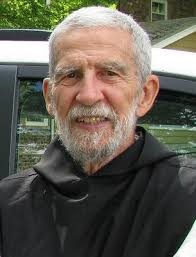John Eudes Bamberger
Whilst taking on manual work in the monastery at the Abbey of Genesee, Henri Nouwen noted how difficult it was to control his thoughts – not only that they were wandering in different directions, but also that he found himself brooding on many negative feelings including hostility to people who had slighted him and not given him sufficient attention, feelings of jealousy and self-pity, and also regret and guilt about difficult or strained relationships.
‘Once in a while I cursed when the rock was too heavy to carry or fell out of my arms into the water … I tried to convert my curse into a prayer … but nothing spectacular happened … my muscles felt strained, my legs tired…. I realised it was exactly the lack of spiritual attention that caused the heaviness in my heart … How true it is that sadness is often the result of our attachment to the world. … I am impatient, restless, full of preoccupations and easily suspicious.’
Seeking advice from the Abbot John Eudes Bamberger during a spiritual direction meeting, Nouwen is advised to try to be more alone, and perhaps to read and study in his room rather than the library where people come and go. It’s all about finding solitude. Discussing the negative thoughts, Eudes recommends that Nouwen recognise the thoughts and let them pass. The skill is also to do simple manual work that can attract one’s attention. So, while moving rocks he could become interested in the rocks, or the birdsong, or type of tree, but without making a project of it. The advice given was to enjoy and be present to what is going on, and find a rhythm in physical activity; a further suggestion was not to try to do so much as feeling tired prevents prayer. Nouwen noted in his diary: ‘I really must enter that “other side”, the quiet, rhythmic, solid side of life, the deep solid stream moving underneath the restless waves of my sea’.
After more than a month into his 7 months stay Nouwen began to feel able to write about the idea of a sacred rhythm, yet he also felt a deep paradox of both a strong desire to stay as a monastic where he would be living life only for the glory of God, but also to leave and live creatively in the world being open to others.
The spiritual direction meetings with the Abbot covered important subjects such as on one meeting when Nouwen asked: ‘When I pray to whom do I pray?’ ‘When I say “Lord”, what do I mean?’ This Bamberger said was the most important question we can raise; in that we can make it the most important question and the centre of our meditation, which sets us on a long road of discovery:
‘The question, Who is the Lord to whom I pray? leads directly to the question, Who am I who wants to pray to the Lord? And then you will soon wonder, why is the Lord of justice also the Lord of love; the God of fear also the God of gentle compassion? … Is there an answer? Yes and no … You will find out in your meditation. You might some day have a flash of understanding even while the question still remains and pulls you closer to God.’
